Outdoor living spaces have become increasingly popular, and a free-standing outdoor gas fireplace can be a beautiful and functional addition to any backyard or patio. These fireplaces provide warmth, ambiance, and a focal point for gatherings, extending the usability of outdoor spaces into cooler months. This article will explore the benefits, types, installation, maintenance, design considerations, and safety of free-standing outdoor gas fireplaces. Additionally, common mistakes to avoid and frequently asked questions will be addressed.

Benefits of a Free Standing Outdoor Gas Fireplace
Extending Outdoor Living
One of the primary benefits of a free-standing outdoor gas fireplace is its ability to extend the usability of outdoor spaces. By providing warmth and light, these fireplaces make patios, decks, and gardens comfortable even during cooler evenings and seasons. This extension of outdoor living space encourages more frequent use and enjoyment of the outdoors.
Creating Ambiance
A free-standing outdoor gas fireplace adds a unique ambiance to any outdoor setting. The flickering flames and warmth create a cozy and inviting atmosphere, perfect for entertaining guests or relaxing with family. The visual appeal of a gas fireplace can also enhance the overall aesthetic of the outdoor area, serving as a beautiful focal point.
Convenience and Ease of Use
Gas fireplaces are known for their convenience and ease of use. Unlike wood-burning fireplaces, they ignite quickly with the push of a button or turn of a knob, providing immediate heat without the need for kindling or tending a fire. Additionally, gas fireplaces produce consistent heat and require less maintenance, making them a practical choice for busy homeowners.

Environmentally Friendly
Gas fireplaces are considered more environmentally friendly than their wood-burning counterparts. They produce fewer emissions, such as smoke and particulates, which contribute to air pollution. Natural gas and propane, the fuels used in gas fireplaces, burn cleaner than wood, making them a more sustainable option for environmentally conscious homeowners.
Safety Features
Free-standing outdoor gas fireplaces come equipped with various safety features to ensure safe operation. Many models include automatic shut-off valves, flame sensors, and protective screens to prevent accidental burns. These features enhance safety, making gas fireplaces a suitable option for families with children and pets.
Versatility in Design
Free-standing outdoor gas fireplaces offer versatility in design, allowing homeowners to choose a style that complements their outdoor decor. From modern and sleek designs to rustic and traditional styles, there are options to suit every taste. The versatility in design also allows for creative placement, whether as a central feature or a complementary element in the outdoor space.
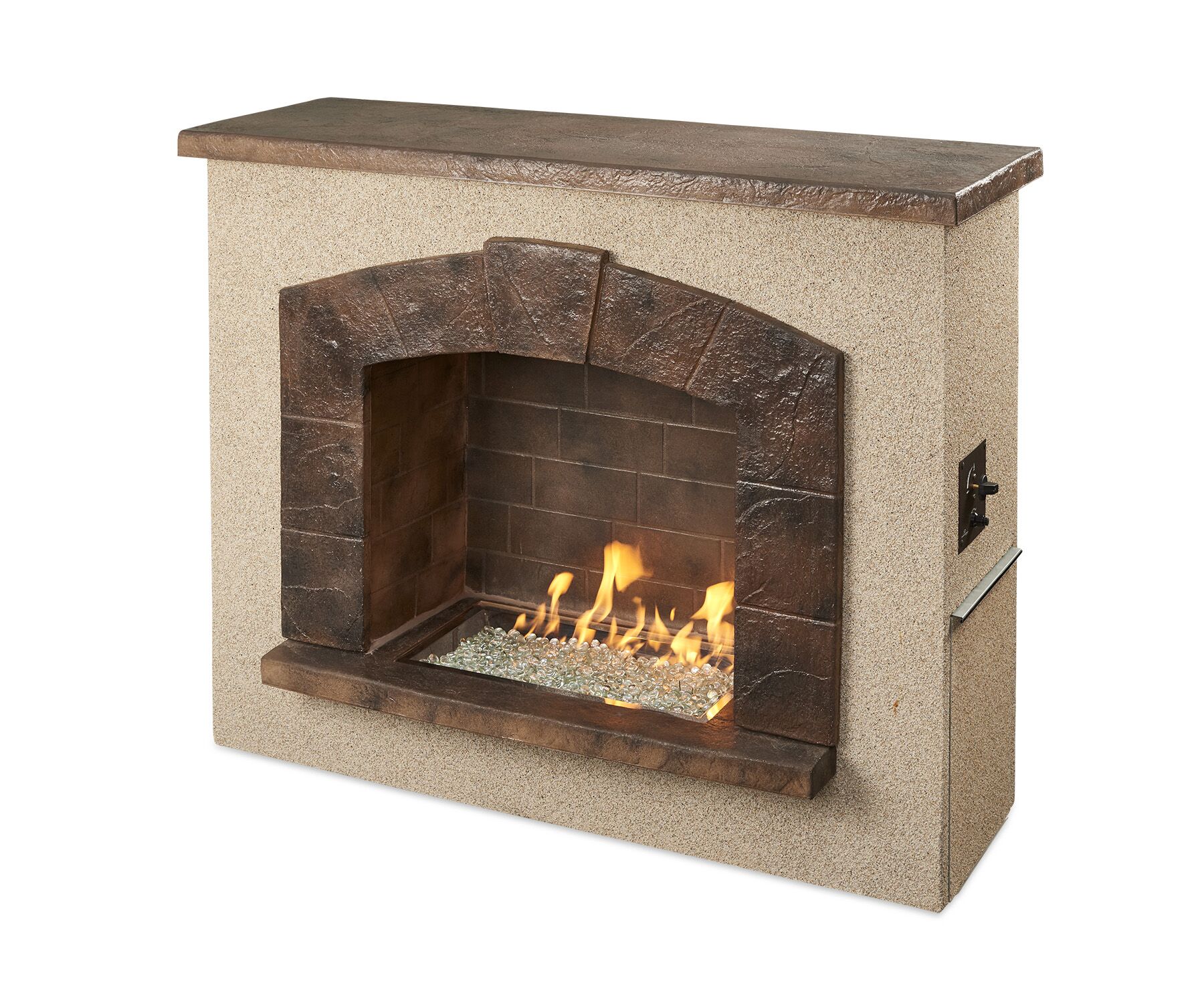
Types of Free Standing Outdoor Gas Fireplaces
Propane Gas Fireplaces
Propane gas fireplaces are popular for their portability and ease of installation. These fireplaces use propane tanks, which can be easily replaced or refilled, making them a convenient choice for homeowners who do not have a natural gas line. Propane fireplaces are available in various sizes and styles, offering flexibility in placement and design.
Natural Gas Fireplaces
Natural gas fireplaces are a great option for homeowners with an existing natural gas line. These fireplaces provide a continuous supply of fuel, eliminating the need to replace or refill propane tanks. Natural gas fireplaces are often more cost-effective in the long run and can be connected to the home’s gas line for consistent and reliable heat.
Tabletop Fireplaces
Tabletop fireplaces are compact and portable, making them ideal for smaller outdoor spaces or for adding a touch of ambiance to a dining or seating area. These fireplaces use small propane canisters and can be placed on tables, countertops, or other flat surfaces. Tabletop fireplaces come in various designs, from minimalist to ornate, to suit different decor styles.

Fire Pits
Free-standing gas fire pits are a popular choice for outdoor settings, providing a central gathering point for family and friends. Fire pits can be fueled by propane or natural gas and come in various shapes and sizes, including round, square, and rectangular designs. They offer a versatile and stylish option for outdoor heating and ambiance.
Chiminea-Style Fireplaces
Chiminea-style gas fireplaces offer a unique and rustic design, inspired by traditional Mexican chimineas. These fireplaces feature a bulbous body with a narrow chimney, directing smoke and heat upward. Chiminea-style fireplaces can be fueled by propane or natural gas and add a distinctive aesthetic to outdoor spaces.
Pagoda-Style Fireplaces
Pagoda-style gas fireplaces feature an Asian-inspired design with tiered roofs and decorative elements. These fireplaces are often larger and more elaborate, serving as a striking focal point in outdoor settings. Pagoda-style fireplaces can be fueled by propane or natural gas and provide both heat and visual interest.
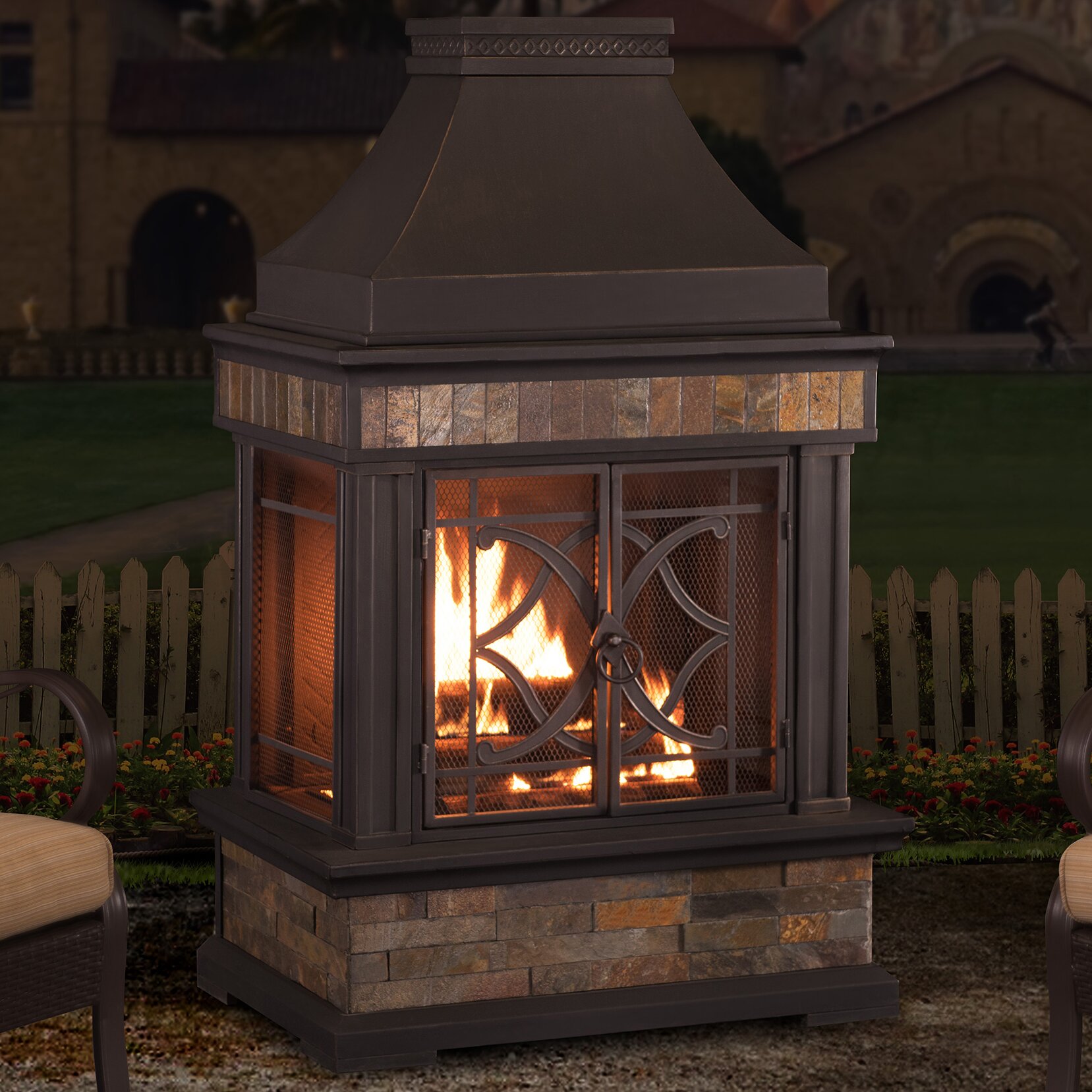
Interesting Articles You May Want to Check:
- How To Build A Outdoor Fireplace With Chimney
- Outdoor Fake Fireplace
- Outdoor Fireplace Surrounds
- Outdoor Fireplace Draft Problem
- Outdoor Brick Fireplace Plans

Installation Considerations
Site Selection
Choosing the right location for a free-standing outdoor gas fireplace is crucial for safety and functionality. Consider factors such as proximity to the house, wind direction, and clearance from combustible materials. The fireplace should be placed on a stable, non-combustible surface, such as a patio or stone base, and positioned to maximize warmth and ambiance.
Gas Supply
For natural gas fireplaces, ensure that there is an accessible gas line for connection. A licensed professional should handle the installation to ensure compliance with local codes and regulations. For propane fireplaces, consider the placement of the propane tank and the ease of access for replacement or refilling.
Ventilation
Proper ventilation is essential for safe operation. Although outdoor fireplaces do not require venting like indoor units, ensuring adequate airflow around the fireplace is important to prevent the buildup of combustion by-products. Avoid placing the fireplace in enclosed or partially enclosed areas without sufficient ventilation.
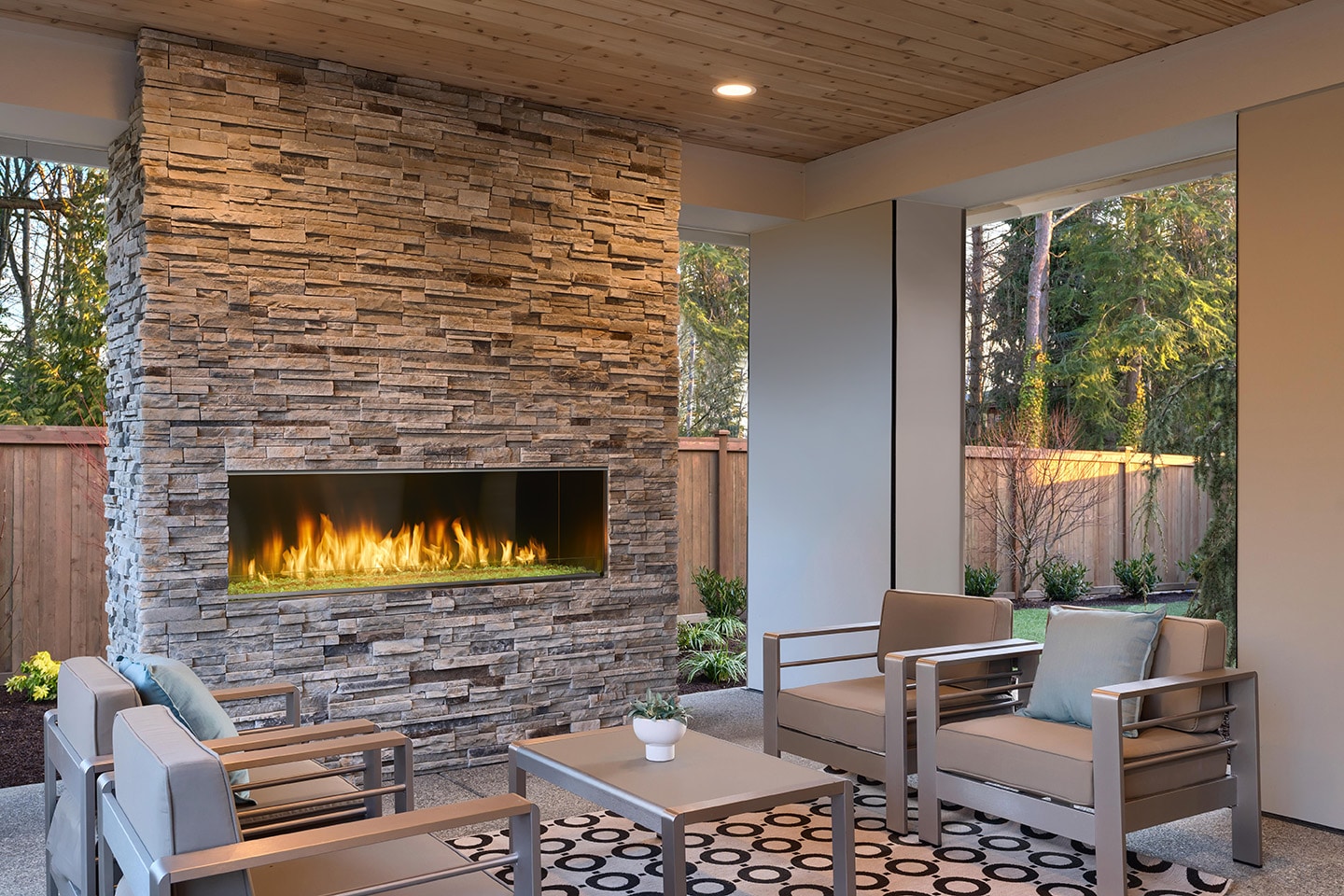
Safety Clearances
Adhering to safety clearances is critical to prevent fire hazards. Follow the manufacturer’s guidelines for the minimum distance between the fireplace and combustible materials, such as walls, furniture, and plants. Ensure that there is ample space around the fireplace for safe operation and that protective screens or barriers are in place to prevent accidental burns.
Electrical Requirements
Some free-standing outdoor gas fireplaces may require electrical connections for ignition systems, lighting, or additional features. Ensure that there is a safe and accessible power source near the installation site. Waterproof and outdoor-rated electrical components should be used to withstand the elements.
Professional Installation
Hiring a professional for the installation of a free-standing outdoor gas fireplace ensures that the unit is installed correctly and safely. Professionals have the knowledge and experience to handle gas connections, electrical work, and compliance with local codes. Proper installation is crucial for the safe and efficient operation of the fireplace.

Maintenance of Free Standing Outdoor Gas Fireplaces
Regular Cleaning
Regular cleaning of the fireplace is essential to maintain its appearance and functionality. Remove any debris, such as leaves and dirt, from around the fireplace and clean the exterior surfaces with a mild detergent and water. For propane fireplaces, check and clean the burner ports to ensure proper flame distribution.
Inspecting Gas Lines
Periodic inspection of gas lines and connections is important to prevent leaks and ensure safe operation. Check for any signs of wear, corrosion, or damage to the gas lines and fittings. If you detect a gas leak or smell gas, turn off the gas supply immediately and contact a professional for inspection and repair.
Checking Ignition Systems
Ensure that the ignition system is functioning correctly by testing it regularly. Clean any dirt or debris from the ignition components and replace batteries if the unit uses battery-powered ignition. If the ignition system is not working properly, consult the manufacturer’s troubleshooting guide or contact a professional for assistance.
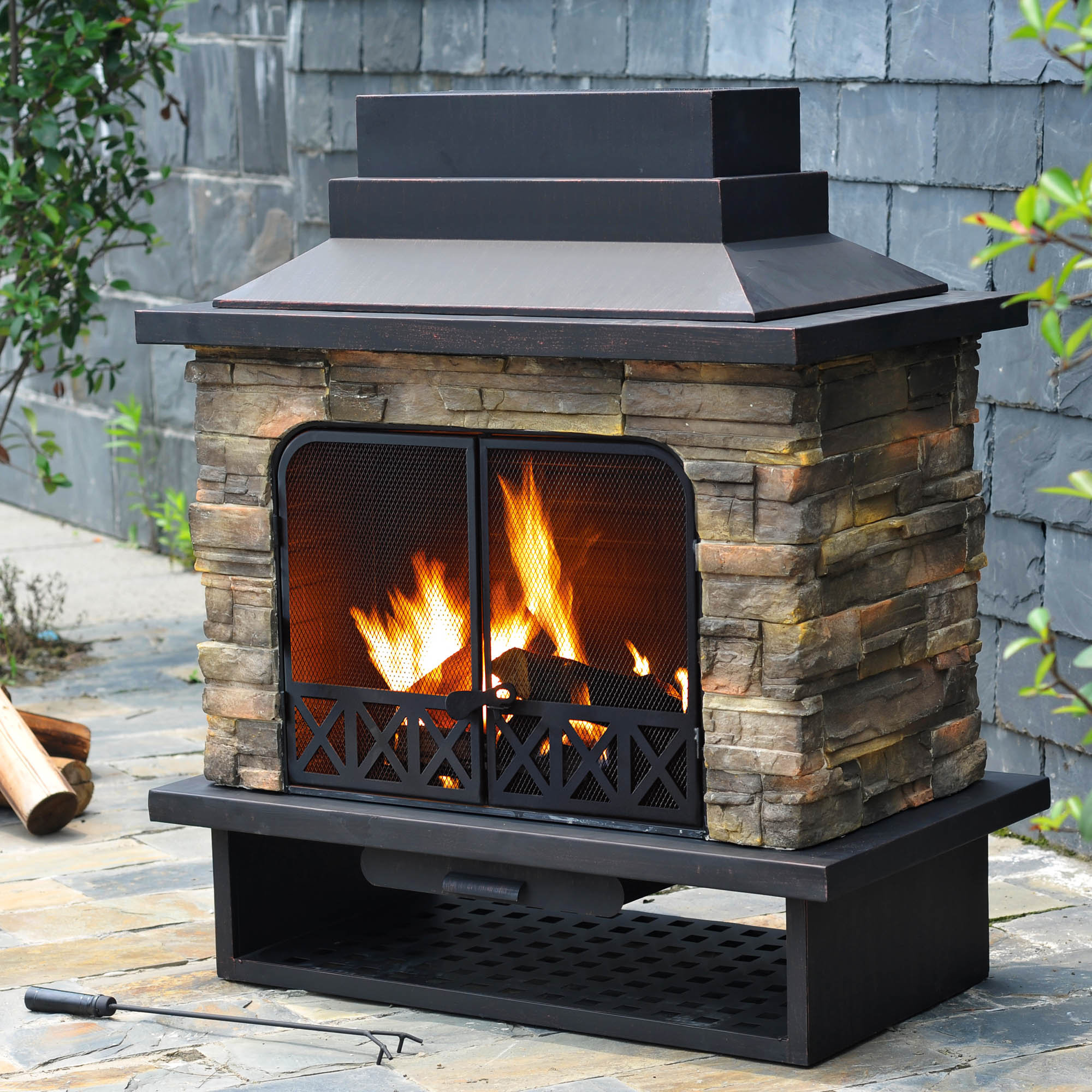
Winterizing the Fireplace
In regions with cold winters, winterizing the fireplace is important to prevent damage from freezing temperatures. Disconnect and store propane tanks in a safe, dry location, and cover the fireplace with a weather-resistant cover. For natural gas fireplaces, shut off the gas supply and cover the unit to protect it from the elements.
Annual Professional Inspection
An annual professional inspection is recommended to ensure the safe and efficient operation of the fireplace. A licensed technician can inspect the gas lines, burner, ignition system, and other components for any signs of wear or damage. Regular professional inspections help identify and address potential issues before they become serious problems.
Addressing Wear and Tear
Over time, outdoor gas fireplaces may experience wear and tear due to exposure to the elements. Regularly inspect the fireplace for any signs of rust, corrosion, or damage to the exterior surfaces. Address any issues promptly to prevent further damage and ensure the longevity of the fireplace.
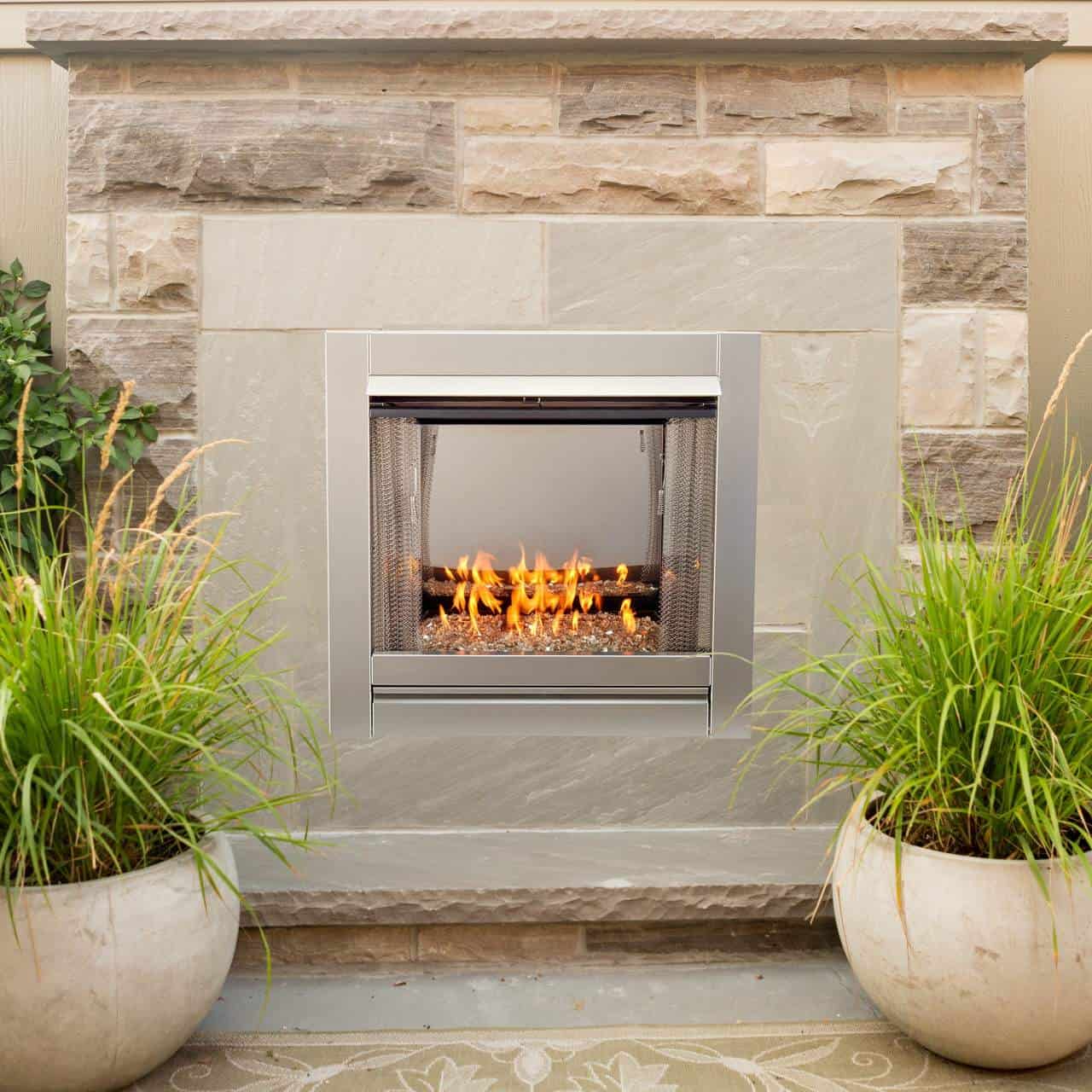
Design Considerations
Choosing the Right Style
Selecting the right style of fireplace is important to complement the overall design of the outdoor space. Consider the architectural style of your home and the existing outdoor decor when choosing a fireplace. Whether you prefer a modern, rustic, traditional, or eclectic look, there are options to suit every style.
Integrating with Landscaping
Integrating the fireplace with the surrounding landscaping enhances the overall aesthetic of the outdoor area. Consider incorporating elements such as stone or brick surrounds, decorative gravel, or planting beds around the fireplace. Proper integration with landscaping creates a cohesive and visually appealing outdoor space.
Seating Arrangements
Designing comfortable seating arrangements around the fireplace encourages relaxation and socializing. Consider the placement of chairs, benches, or outdoor sofas to maximize the warmth and ambiance of the fireplace. Ensure that there is enough space for movement and that seating is positioned at a safe distance from the flames.
Lighting and Accessories
Adding lighting and accessories can enhance the functionality and ambiance of the fireplace area. Consider installing outdoor lighting, such as string lights or lanterns, to create a warm and inviting atmosphere. Accessories such as firewood holders, decorative screens, and outdoor rugs can add style and comfort to the space.
Weather Protection
Protecting the fireplace and surrounding area from the elements is important for longevity and usability. Consider installing a pergola, canopy, or umbrella to provide shade and protection from rain and snow. Weather-resistant covers for the fireplace and furniture can also help extend the life of outdoor components.
Personalizing the Space
Personalizing the fireplace area with unique decor and design elements makes it a reflection of your style and taste. Consider adding decorative items such as throw pillows, blankets, and outdoor art to create a cozy and inviting atmosphere. Personal touches make the outdoor space more enjoyable and unique.

Safety Tips
Proper Placement
Proper placement of the fireplace is essential for safety. Ensure that the fireplace is placed on a stable, non-combustible surface and at a safe distance from combustible materials. Avoid placing the fireplace near overhanging trees, awnings, or other structures that could catch fire.
Supervision
Always supervise the fireplace when it is in use. Never leave the fireplace unattended, especially if there are children or pets in the area. Ensure that someone responsible is always present to monitor the flames and address any safety concerns.
Keeping a Fire Extinguisher Nearby
Having a fire extinguisher readily available near the fireplace is a crucial safety measure. In the event of an emergency, a fire extinguisher can help control and extinguish the flames. Ensure that everyone in the household knows the location and proper use of the fire extinguisher.
Preventing Tripping Hazards
Ensure that the area around the fireplace is free of tripping hazards. Remove any clutter, such as garden tools, toys, or furniture, that could cause someone to trip and fall. Adequate lighting around the fireplace can also help prevent accidents.
Safe Storage of Propane Tanks
If using a propane fireplace, store propane tanks safely and securely. Keep tanks in a well-ventilated area away from direct sunlight and heat sources. Ensure that tanks are upright and properly secured to prevent tipping and leaks. Regularly check tanks for signs of damage or leaks.
Educating Family Members
Educate all family members on the safe operation and maintenance of the fireplace. Ensure that everyone knows how to light and extinguish the fireplace, recognize signs of gas leaks, and respond to emergencies. Regular safety drills and reminders can help reinforce safe practices.

Common Mistakes to Avoid
Incorrect Installation
One of the most common mistakes is incorrect installation. Improper installation can lead to safety hazards, inefficient operation, and damage to the fireplace. Always hire a professional for installation to ensure compliance with local codes and proper setup.
Ignoring Maintenance
Neglecting regular maintenance can lead to reduced performance and safety risks. Regular cleaning, inspection of gas lines, and checking the ignition system are essential for safe and efficient operation. Schedule annual professional inspections to address any potential issues.
Overlooking Safety Features
Failing to use and maintain safety features can result in accidents and injuries. Ensure that the fireplace is equipped with necessary safety features, such as automatic shut-off valves and protective screens. Regularly test and maintain these features to ensure they function correctly.
Inadequate Ventilation
Inadequate ventilation can lead to poor air quality and increased levels of combustion by-products. Ensure that the fireplace is placed in a well-ventilated area and that there is sufficient airflow around the unit. Avoid using the fireplace in enclosed or partially enclosed spaces without proper ventilation.
Using Incorrect Fuel
Using the wrong type of fuel can damage the fireplace and create safety hazards. Ensure that the fireplace is designed for the specific type of gas being used, whether propane or natural gas. Follow the manufacturer’s guidelines for fuel usage and storage.
Ignoring Local Codes and Regulations
Ignoring local building codes and regulations can result in fines, legal issues, and safety hazards. Always ensure that the installation complies with local codes and obtain any necessary permits. Consulting with a professional installer familiar with local regulations can help ensure compliance.

How do I choose the right size for a free-standing outdoor gas fireplace?
Choosing the right size of a free-standing outdoor gas fireplace depends on the size of your outdoor space and your heating needs. Measure the area where you plan to install the fireplace and consider the amount of heat output required to warm the space. Larger fireplaces are suitable for more extensive areas, while smaller units are ideal for cozy patios or balconies. Consulting with a professional can help determine the appropriate size for your specific needs.
Can I use a free-standing outdoor gas fireplace in all weather conditions?
Free-standing outdoor gas fireplaces are designed to withstand various weather conditions, but certain precautions should be taken to protect the unit. During heavy rain or snow, cover the fireplace with a weather-resistant cover to prevent water damage. In extremely windy conditions, avoid using the fireplace to prevent the flames from being blown out or causing hazards. Proper maintenance and protection can ensure the longevity and safe operation of the fireplace in different weather conditions.
How do I maintain and clean my free-standing outdoor gas fireplace?
Maintaining and cleaning your free-standing outdoor gas fireplace involves regular inspections and upkeep. Clean the exterior surfaces with mild detergent and water, and remove any debris from around the unit. Check gas lines and connections for signs of wear or damage and ensure the ignition system is functioning correctly. For propane fireplaces, inspect and clean the burner ports. Schedule annual professional inspections to address any potential issues and ensure safe operation.
Are free-standing outdoor gas fireplaces safe for children and pets?
Free-standing outdoor gas fireplaces can be safe for children and pets when proper safety measures are in place. Ensure that the fireplace is equipped with protective screens and safety features, such as automatic shut-off valves. Supervise children and pets when the fireplace is in use, and educate family members on safe practices. Maintaining a safe distance from the flames and addressing any potential hazards can help ensure the safety of children and pets.
Can I convert a wood-burning outdoor fireplace to a gas fireplace?
Yes, it is possible to convert a wood-burning outdoor fireplace to a gas fireplace. This conversion typically involves installing a gas insert or gas log set and connecting it to a suitable gas supply, either propane or natural gas. The existing structure of the wood-burning fireplace can often be used, but modifications may be necessary to accommodate the gas components. Consulting with a professional installer can ensure a successful and safe conversion.
What are the benefits of using a propane gas fireplace compared to a natural gas fireplace?
Propane gas fireplaces offer portability and ease of installation, making them ideal for homeowners without a natural gas line. Propane tanks can be easily replaced or refilled, providing a convenient fuel source. Natural gas fireplaces, on the other hand, offer a continuous supply of fuel and can be more cost-effective in the long run. The choice between propane and natural gas depends on availability, convenience, and cost considerations. Both options provide efficient and reliable heating for outdoor spaces.

Related Posts: